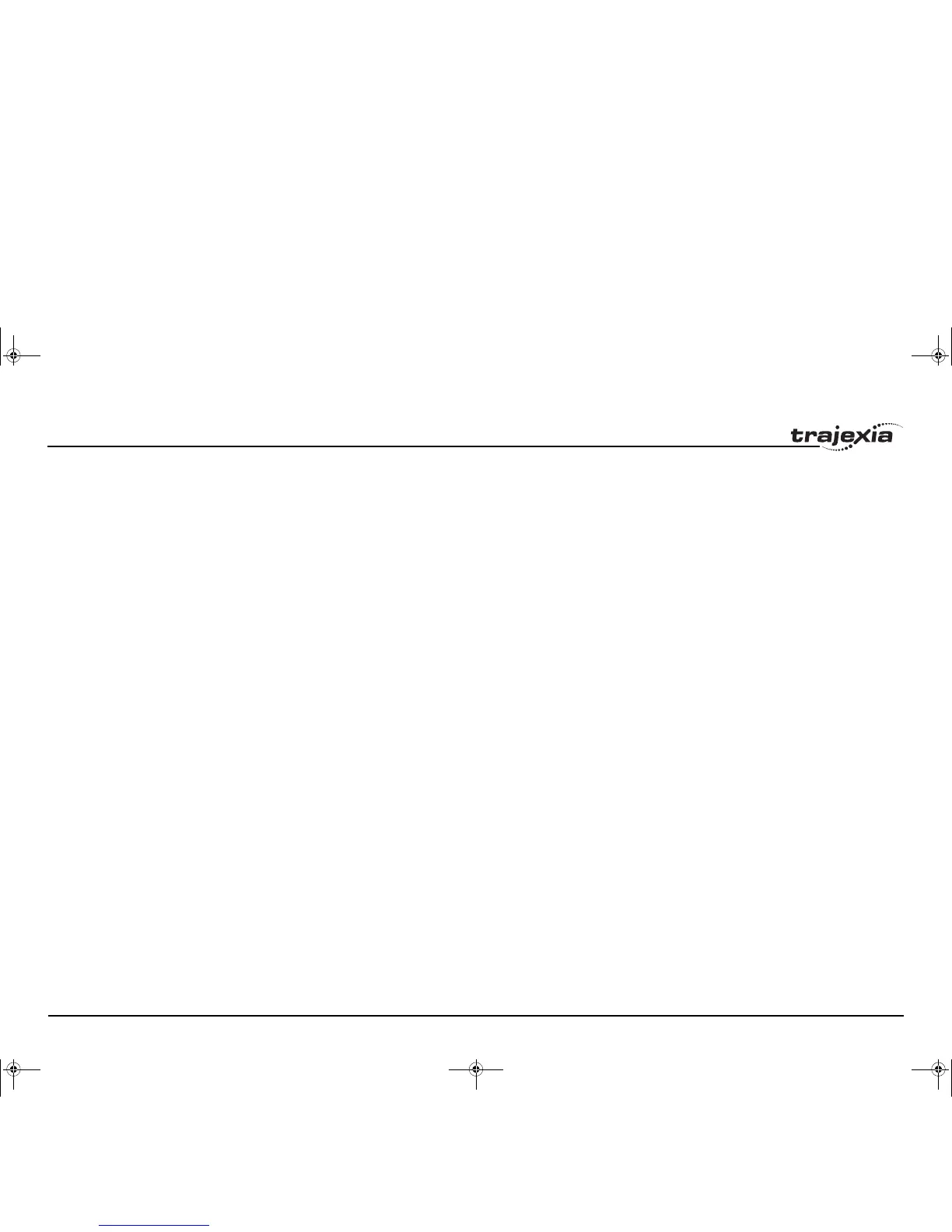BASIC commands
PROGRAMMING MANUAL 136
Revision 3.0
3.2.237 SCOPE
/i
Type System command
Syntax SCOPE(control, period, table_start, table_stop, P0 [ , P1 [ , P2 [ , P3 ]]])
Description The SCOPE command programs the system to automatically store up to 4
parameters every sample period. The storing of data will start as soon as the
TRIGGER command has been executed.
The sample period can be any multiple of the servo period. The parameters
are stored in the TABLE array and can then be read back to a computer and
displayed on the Trajexia Tools Oscilloscope or written to a file for further
analysis using the Create Table file option on the File menu.
The current TABLE position for the first parameter which is written by SCOPE
can be read from the SCOPE_POS parameter.
Notes:
1.Trajexia Tools uses the SCOPE command when running the Oscilloscope
function.
2.To minimize calculation time for writing the real-time data, the SCOPE com-
mand is writing raw data to the TABLE array. For example
a)The parameters are written in encoder edges (per second) and therefore
not compensated for the UNITS conversion factor.
b)The MSPEED parameter is written as the change in encoder edges per
servo period.
3.Applications like the CAM command, CAMBOX command and the SCOPE
command all use the same TABLE as the data area.
Arguments • control
Set on or off to control SCOPE execution. If turned on the SCOPE is
ready to run as soon as the TRIGGER command is executed.
• period
The number of servo periods between data samples.
• table_start
The address of the first element in the TABLE array to start storing data.
• table_stop
The address of the last element in the TABLE array to be used.
• P0
First parameter to store.
• P1
Optional second parameter to store.
• P2
Optional third parameter to store.
• P3
Optional fourth parameter to store.
Example SCOPE(ON,10,0,1000,MPOS AXIS(1),DPOS AXIS(1))
This example programs the SCOPE function to store the MPOS parameter
for axis 1 and the DPOS parameter for axis 1 every 10 servo cycles. The
MPOS parameter will be stored in TABLE locations 0 to 499; the DPOS
parameters, in TABLE locations 500 to 999. The SCOPE function will wrap
and start storing at the beginning again unless stopped. Sampling will not
start until the TRIGGER
command is executed.
Example SCOPE(OFF)
This above line turns the scope function off.
See also SCOPE_POS, TABLE, TRIGGER.
I52E-EN-03.book Seite 136 Freitag, 29. Juni 2007 11:55 11
